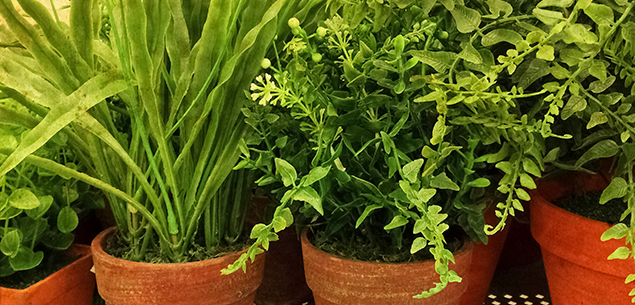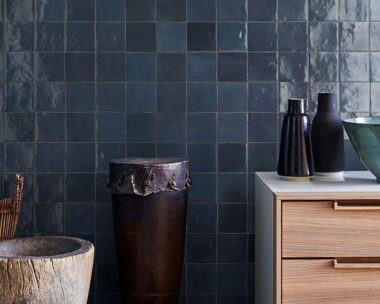I am the camouflage queen. “Put a pot plant in front of it” is my mantra. This philosophy applies both inside and out, mainly because I don’t see the point in wasting a lot of time and money trying to remove something unsightly, when a small outlay and 10 minutes of reorganisation will do the trick.
Believe me, there are better ways to spend time outside than trying to dig out the remains of the last owner’s failed fishpond. Fill it up with soil, plant it with gossamer grass and stick a totem pole in the middle, and you’ll have a classy new focal point.
At our place, two kinds of camouflage are needed. One is to cover up unsightly structures that can’t be moved, and the other is to hide things that can be moved, but aren’t. I’m speaking here of the Partner’s collection of dirty boots and miscellaneous small garden implements which reside outside our courtyard door, looking messy and tripping people up.

Rural dwellers are often plagued by the water tank, but here it’s buried beneath the terrace, and accessed via the timber seat.
Yes, there is a garden shed but it’s about 30 metres from the house so it’s not practical to leave your gumboots there on the way in. Obviously, we need a space right outside the door for boots, string, secateurs, wet shoes, screwdrivers and the dog’s brush. At the moment, some or all of these items reside on the outdoor table where the umbrella does a valiant job of keeping them almost dry.
A decent outdoor cupboard will fix the problem, but it will have to be waterproof. My quick fix solution for that is to buy a not-very-attractive (and hopefully not very expensive) plastic cupboard or storage unit from a hardware store, and then disguise it with screening. Panels of timber slats are a great choice, and you can even grow climbers up them for further camouflage.
If you enjoy repurposing junk, you could be lucky enough to find a mechanic’s old tin tool cupboard. It might even have the original signage on it. If not, you could add your own.
But make sure such a find is waterproof. There’s no point spending time and money on it if your gumboots still fill up with water.

Slatted timber screens like this are available pre-made, so they’re perfect for a quick fix.
If you have only boots and shoes to store, a tin trunk will do the job. Old and rustic is a good look, but you could also restore it to smart and contemporary style with a bit of panelbeating, paint and new strapping. And if you have a friend with a vineyard, you might be able to source a timber wine barrel.
Obviously it’ll be waterproof – or wine-proof – and you can cut out a section to make a hinged door through which your partner can post his or her boots.
The other branch of camouflage has to do with covering up the nasty bits that most houses and gardens have. The back of our house is home to a truly horrible collection of drains, plastic downpipes, the water pump, hoses, the gas bottle and more, and the current plan is to try to get them all a bit closer together and build a slatted timber structure over the whole lot. It’ll have a hinged lid, it’ll keep everything tidy, the Partner will be able to put all his hose fittings in there and the cats will lie on it to sunbathe in the late afternoon. With a pot plant at either end, it’ll be a design feature rather than a design disaster.
Speaking of pot plants, they’re a life-saver when it comes to hiding something ugly. A cleverly clustered group of terracotta or ceramic containers, planted with lush foliage, will look exactly as it is, and the fact that it’s hiding the pump and power for the water feature will be your secret. One of the best tricks I’ve seen lately is a big terracotta pot upturned over an ugly irrigation fitting, with a slightly smaller one, planted with trailing ivy, on top. The irrigation fitting has to be inspected occasionally, so it’s no drama to move the pots.
On a somewhat larger scale, you may have areas of your garden you don’t want to share. Large piles of unmentionables are actually easy to screen with a simple, freestanding fence of trellis or timber slats. Grow something up it – mine has two tecomanthe climbers – and it’ll give the garden a whole new dimension.




